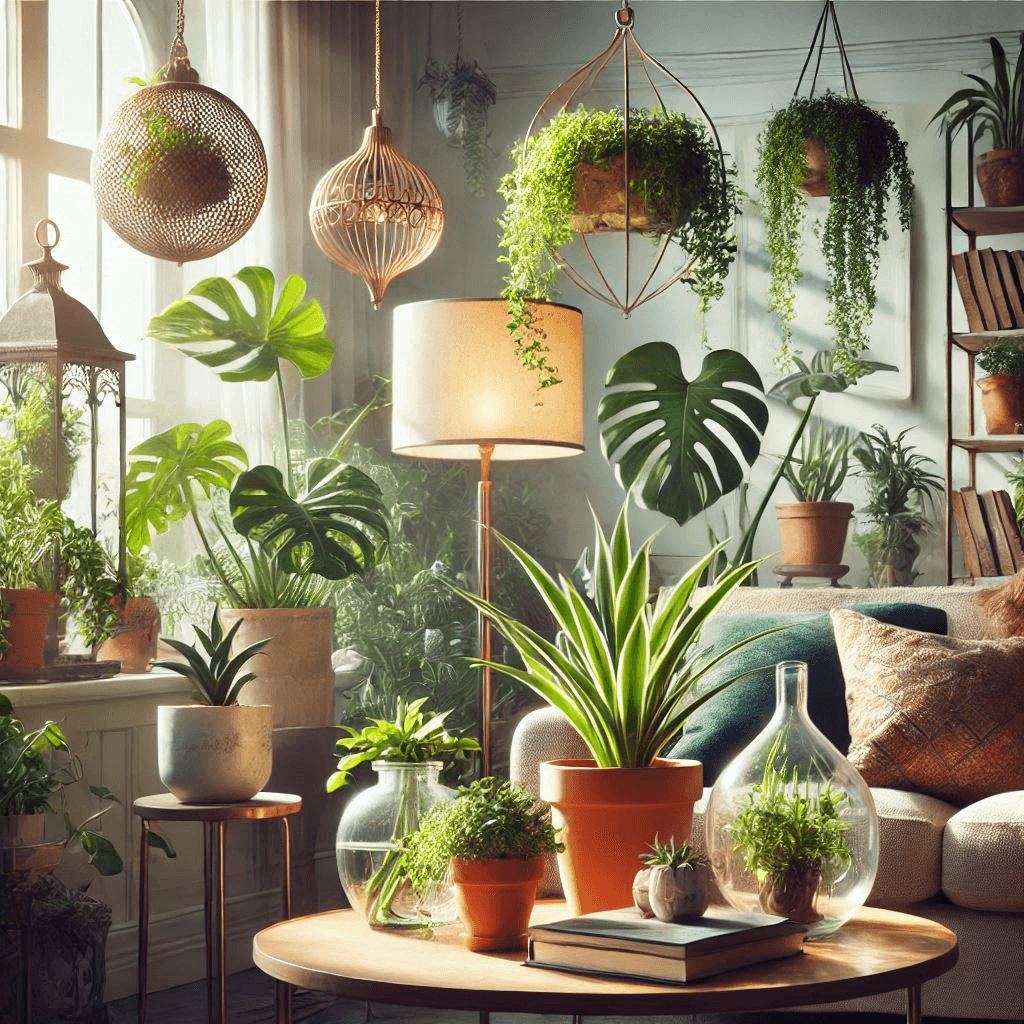Indoor plants do more than just add a touch of greenery to your home. They play a vital role in improving air quality, making your living space healthier and more pleasant. In this article, we’ll explore the benefits of indoor plants for air quality and introduce you to some of the best plants that can help purify the air in your home.
Why Indoor Plants Improve Air Quality
Indoor plants are natural air purifiers. They can absorb harmful chemicals, filter toxins, and release oxygen, creating a healthier environment for you and your family. The presence of plants in your home can help remove pollutants that are commonly found in indoor air, such as formaldehyde, benzene, and ammonia.
Plants and Air Purification
Plants work through a process called phytoremediation. Through this process, plants absorb pollutants from the air through tiny pores in their leaves and roots. They break down these pollutants, which are then either stored or released as harmless gases. This process helps improve the quality of the air you breathe indoors.
- Plants absorb carbon dioxide and release oxygen, improving air circulation.
- They help increase humidity, which is beneficial for your skin and respiratory health.
- Many plants can filter out harmful chemicals like formaldehyde and benzene.
Scientific Studies on Air Quality and Plants
Numerous studies, including NASA’s Clean Air Study, have shown that indoor plants can significantly improve air quality by removing toxins. According to research, plants like the spider plant, peace lily, and snake plant can reduce harmful substances from the air and increase oxygen levels, creating a cleaner and healthier living environment.
Top Indoor Plants for Better Air Quality
There are several plants known for their ability to purify indoor air. Here are some of the best options that are easy to care for and highly effective at improving air quality.
Spider Plant (Chlorophytum comosum)
The spider plant is a popular air purifier that absorbs carbon monoxide and formaldehyde from the air. It’s low-maintenance and thrives in indirect light, making it ideal for beginners. You only need to water it when the soil is dry. This plant is also non-toxic to pets, making it a great choice for homes with animals.
Snake Plant (Sansevieria trifasciata)
Snake plants filter out toxins like formaldehyde, benzene, and xylene and are particularly beneficial because they continue purifying the air at night. They thrive in low light and require minimal care, making them perfect for busy homeowners. These hardy plants only need occasional watering, so they’re great for people who may forget to water frequently.
Peace Lily (Spathiphyllum)
Peace lilies are known for their ability to remove toxins such as ammonia, benzene, and formaldehyde from the air while also releasing oxygen. They need indirect light and regular watering to keep the soil moist. Aside from purifying the air, peace lilies bloom with beautiful white flowers, adding aesthetic value to your home.
Aloe Vera
In addition to its healing properties, aloe vera helps purify the air by absorbing harmful chemicals like formaldehyde and benzene. It requires little maintenance—just place it in a sunny spot and water it occasionally. Aloe vera also has soothing properties for burns and skin irritations, making it a versatile plant for the home.
Boston Fern (Nephrolepis exaltata)
Boston ferns are effective at removing formaldehyde from the air and are ideal for humid environments. They prefer indirect light and require regular misting and watering to maintain their lush green appearance. These plants are well-suited for bathrooms or kitchens, where moisture levels are higher.
Areca Palm (Dypsis lutescens)
The areca palm purifies the air by absorbing toxins and releasing oxygen while increasing humidity. It grows well in moderate light and requires moderate watering. This plant is ideal for living rooms, offices, or entryways where it can not only purify the air but also enhance the space with its elegant, feathery leaves.
These indoor plants offer both health benefits and a touch of greenery to any room in your home. With minimal care, they can improve the air quality and make your home more inviting.
How to Care for Indoor Plants to Improve Air Quality
To ensure that your indoor plants effectively purify the air, proper care is essential. Here are some simple tips to help you maintain your plants and keep them healthy.
Light Requirements
Different plants have different light needs. For optimal growth, it’s important to place your plants in areas where they receive the right amount of light.
- Bright, indirect light is ideal for most air-purifying plants, such as the peace lily and aloe vera.
- Low-light tolerant plants like the snake plant and spider plant can thrive in dimmer spots, making them perfect for shaded corners.
- Direct sunlight should be avoided for most indoor plants, as it can cause their leaves to burn.
Watering and Maintenance
Indoor plants need regular watering, but over-watering can lead to root rot. Follow these guidelines to keep your plants healthy:
- Water your plants when the soil feels dry to the touch, but avoid letting them sit in excess water.
- Be sure to check for any yellowing or browning of leaves, as this may be a sign of overwatering or a need for more light.
- Regularly clean the leaves of your plants to remove dust, allowing them to absorb more sunlight and continue purifying the air effectively.
Choosing the Right Pots
Selecting the right pots is crucial for your plant’s health and air-purifying abilities. Ensure that the pot has good drainage to prevent water from pooling at the bottom, which can cause root rot.
- Opt for pots with drainage holes to allow excess water to escape.
- Choose pots that are slightly larger than the plant’s root ball to give it room to grow.
- Use well-draining soil to ensure that the plant’s roots aren’t sitting in soggy soil.
Conclusion
Indoor plants are a natural and effective way to improve air quality in your home. Not only do they help remove harmful toxins from the air, but they also enhance the aesthetic appeal of your living spaces. By adding plants like the spider plant, snake plant, and peace lily, you can create a healthier and more inviting home environment. With proper care and maintenance, your indoor plants will thrive, purifying the air and bringing life to your home for years to come.




